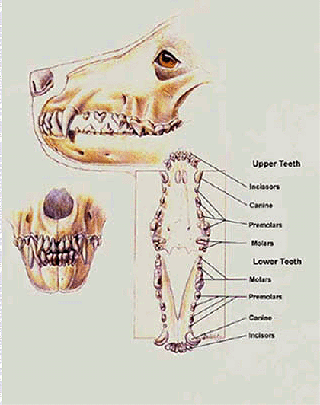On the average, wolves not only have bigger teeth than any dog breed studied, but they are larger in proportion. In the majority of breeds, tooth size is typically in conformity with the size of the skull (see graphic below), even in those breeds with deformed skulls such as bulldogs. The few exceptions are those breeds which have somewhat smaller teeth than the average (Fuller, 1965). Nowak further points out that the most useful individual teeth are the carnassials (specialized molars).
C.lupus arctos (the Arctic Wolf) has especially huge carnassials, and series of available specimens of males only demonstrate no decline in size over the years.
